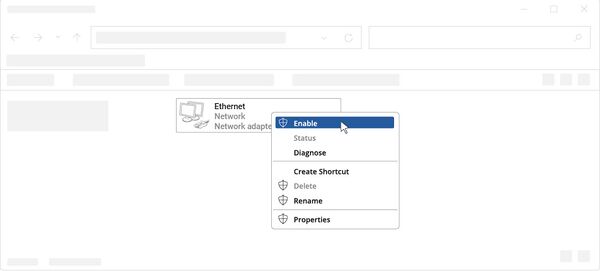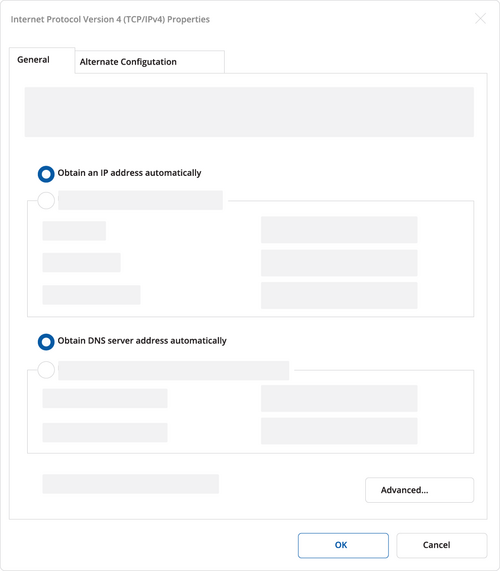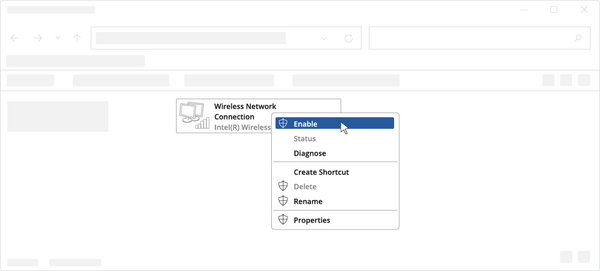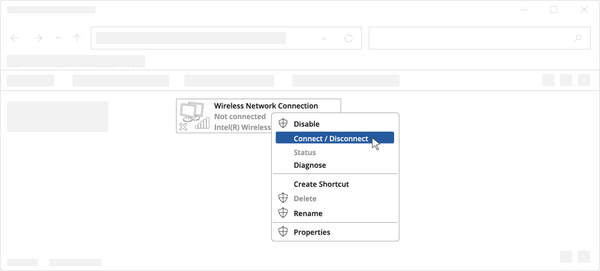QSG RUT200: Difference between revisions
No edit summary |
|||
| (8 intermediate revisions by 2 users not shown) | |||
| Line 17: | Line 17: | ||
=== General === | === General === | ||
{| class="wikitable | {| class="wikitable" | ||
|- style="font-weight:bold;" | |- style="font-weight:bold;" | ||
! colspan="2" | Radio specifications | ! colspan="2" | Radio specifications | ||
| Line 27: | Line 27: | ||
|33 dBm@GSM, 24 dBm@WCDMA, 23 dBm@LTE, 20 dBm@WiFi | |33 dBm@GSM, 24 dBm@WCDMA, 23 dBm@LTE, 20 dBm@WiFi | ||
|- style="font-weight:bold;" | |- style="font-weight:bold;" | ||
| colspan="2" |Bundled accessories specifications* | | colspan="2" style="text-align:center;" |Bundled accessories specifications* | ||
|- | |- | ||
|Power adapter | |Power adapter | ||
| Line 39: | Line 39: | ||
|} | |} | ||
<small><nowiki>*</nowiki> Order code dependant. | |||
<nowiki>**</nowiki> Higher gain antenna can be connected to compensate for cable attenuation when a cable is used. The user is responsible for the compliance with the legal regulations.</small> | |||
RUT200 router must be used in compliance with any and all applicable national and international laws and with any special restrictions regulating the utilization of the communication module in prescribed applications and environments. | |||
'''NCC Warning Statement''' | |||
* Without permission granted by the NCC, any company, enterprise, or user is not allowed to change frequency, enhance transmitting power or alter original characteristic as well as performance to a approved low power radio-frequency devices. The low power radio-frequency devices shall not influence aircraft security and interfere legal communications; If found, the user shall cease operating immediately until no interference is achieved. The said legal communications means radio communications is operated in compliance with the Telecommunications Management Act. The low power radio-frequency devices must be susceptible with the interference from legal communications or ISM radio wave radiated devices. | |||
* Use with caution to minimize electromagnetic impacts. | |||
Detailed compliance information is available at the following internet address: [https://wiki.teltonika-networks.com/view/Certificates wiki.teltonika-networks.com/view/Certificates]. | Detailed compliance information is available at the following internet address: [https://wiki.teltonika-networks.com/view/Certificates wiki.teltonika-networks.com/view/Certificates]. | ||
[[Image:Instructions_LOGO.png|50px]] This sign means that is necessary to read the User's Manual before you start using the device. | |||
[[Image: | |||
[[Image:WEEE_LOGO.png|50px]] This sign on the package means that all used electronic and electric equipment should not be mixed with general household waste. | |||
=== RF exposure === | === RF exposure === | ||
| Line 194: | Line 190: | ||
</table> | </table> | ||
= | {{Template: Configure_your_computer_LAN_Windows | ||
<!------------------------DEVICE-----------------------> | |||
| name = RUT200 | |||
}} | |||
{{Template: Configure_your_computer_WiFi_Windows | |||
<!------------------------DEVICE-----------------------> | |||
| name = RUT200 | |||
}} | |||
== Login to device == | == Login to device == | ||
| Line 240: | Line 224: | ||
* Industrial Grade SIM cards are recommended for devices requiring a long lifespan used in environments with '''extreme temperatures''', '''corrosive''' or '''extra humid climates''', or hard-to-reach locations. | * Industrial Grade SIM cards are recommended for devices requiring a long lifespan used in environments with '''extreme temperatures''', '''corrosive''' or '''extra humid climates''', or hard-to-reach locations. | ||
[[Category:RUT200]] | [[Category: RUT200]] | ||
Latest revision as of 07:11, 12 June 2024
Main Page > RUT Routers > RUT200 > QSG RUT200This Wiki page contains the online version of the Quick Start Guide (QSG) for the RUT200 LTE Router. Here you will find an overview of the various components on the front and back of a RUT200 device, hardware installation instructions, first login information, device specifications, and general safety information. It is highly recommended to acquaint yourself with the Quick Start Guide before using the device. You can also locate a printed version of the Quick Start Guide in the packaging box of your device.
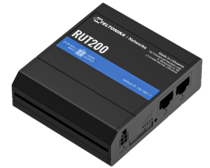 |
 |
 |
Safety information
Before starting operating the device, please review recommendations and precautions to minimize the possibility of accidents. Safety precautions presented are supplementary and subject to the local safety regulations. When various operations are executed on the device, the user must fully follow the safety instructions and recommendations provided with the device.
General
| Radio specifications | |
|---|---|
| RF technologies | 2G, 3G, 4G, WiFi |
| Max RF power | 33 dBm@GSM, 24 dBm@WCDMA, 23 dBm@LTE, 20 dBm@WiFi |
| Bundled accessories specifications* | |
| Power adapter | Input: 0.45A@100-240 VAC, Output: 9 VDC, 1A, 4-pin plug |
| Mobile antenna | 698~960/1710~2690 MHz, 50 Ω, VSWR<3, gain** 4 dBi, omnidirectional, SMA male connector |
| WiFi antenna | 2400~2500 MHz, 50Ω, VSWR<2.5, gain** 5dBi, omnidirectional, RP-SMA male connector |
* Order code dependant.
** Higher gain antenna can be connected to compensate for cable attenuation when a cable is used. The user is responsible for the compliance with the legal regulations.
RUT200 router must be used in compliance with any and all applicable national and international laws and with any special restrictions regulating the utilization of the communication module in prescribed applications and environments.
NCC Warning Statement
- Without permission granted by the NCC, any company, enterprise, or user is not allowed to change frequency, enhance transmitting power or alter original characteristic as well as performance to a approved low power radio-frequency devices. The low power radio-frequency devices shall not influence aircraft security and interfere legal communications; If found, the user shall cease operating immediately until no interference is achieved. The said legal communications means radio communications is operated in compliance with the Telecommunications Management Act. The low power radio-frequency devices must be susceptible with the interference from legal communications or ISM radio wave radiated devices.
- Use with caution to minimize electromagnetic impacts.
Detailed compliance information is available at the following internet address: wiki.teltonika-networks.com/view/Certificates.
![]() This sign means that is necessary to read the User's Manual before you start using the device.
This sign means that is necessary to read the User's Manual before you start using the device.
 This sign on the package means that all used electronic and electric equipment should not be mixed with general household waste.
This sign on the package means that all used electronic and electric equipment should not be mixed with general household waste.
RF exposure
This device meets the official requirements for exposure to radio waves. This device is designed and manufactured not to exceed the emission limits for exposure to radio frequency (RF) energy set by authorized agencies. The device must be used with a minimum separation of 20 cm from a person’s body to ensure compliance with RF exposure guidelines. Failure to observe these instructions could result in your RF exposure exceeding the applicable limits.
External antennas used with RUT200 must be installed to provide a distance of at least 20 cm from any people and must not be co-located or operated in conjunction with any other antenna or transmitter.
Any external antenna gain must meet RF exposure and maximum radiated output power limits of the applicable rule section.
| Maximum transmission power | |
|---|---|
| GSM | 33 dBm |
| WCDMA | 24 dBm |
| LTE | 23 dBm |
| WiFi | 20 dBm |
Operating conditions
- Operating temperature: -40° to +75° Celsius
- Humidity should be in the range of 10% to 90% (non-condensing). Only use the device in dry environments.
- Out of direct sunlight
- Away from heat source, corrosive substances, salts, and flammable gases
Attention: operation outside the permissible range can considerably shorten the service life of the device.
Faulty and damaged products
- Do not attempt to disassemble the device or its accessories.
- Only qualified personnel must service or repair the device or its accessories.
- If your device or its accessories have been submerged in water punctured or subjected to a severe fall, do not use until they have been checked at an authorized service center.
Electrical safety
- Only use approved accessories.
- Do not connect with incompatible products or accessories.
- It is recommended to ground devices with grounding terminals before connecting them to power. Failure to ground appropriately might result in a shock hazard. The cross-sectional area of the protective grounding conductor should be at least 1mm2.
Product handling
- You alone are responsible for how you use your device and any consequences related to its use.
- Use of your device is subject to safety measures designed to protect users and their environment.
- Always treat your device and its accessories with care and keep it in a clean and dust-free place.
- Do not expose your device or its accessories to open flames, lit tobacco products, liquid, moisture, or high humidity.
- Do not drop, throw or try to bend your device or its accessories.
- Do not use harsh chemicals, cleaning solvents, or aerosols to clean the device or its accessories.
- Do not paint your device or its accessories.
- Do not attempt to disassemble your device (exemptions for devices that require disassembly for SIM insertion) or its accessories: it does not contain any user-serviceable parts. For safety reasons, the equipment should be opened only by qualified personnel.
- Make sure to use ESD personal protective equipment while the equipment is serviced.
- Do not use your device in an enclosed environment where heat dissipation is poor.
- Prolonged use in such space may cause excessive heat and raise ambient temperature, which will lead to the automatic shutdown of your device or the disconnection of the mobile network connection for your safety. To use your device again after such a shutdown, cool it in a well-ventilated place before turning it on.
- Please check all national laws and local regulations for the disposal of electronic products.
- Do not operate the device where ventilation is restricted.
- Do not use or install this product near water to avoid fire or shock hazards.
- Avoid exposing the equipment to rain or damp areas.
- Arrange power and Ethernet cables so that they are not likely to be stepped on or have items placed on them.
- Ensure that the voltage and the rated current of the power source match the device’s requirements. Do not connect the device to an inappropriate power source.
- During a thunderstorm, no operations should be carried out on the device and cables.
- The unit must be powered off where blasting is in progress and explosive atmospheres are present or near medical life support equipment.
- Do not leave your device and its accessories within reach of small children or allow them to play with it. They could hurt themselves or others and could accidentally damage the device. Your device contains small parts with sharp edges that may cause an injury choking hazard.
- Like any wireless device, this device operates using radio signals, which cannot guarantee connection in all conditions. Therefore, you must never rely solely on any wireless device for emergency communications or otherwise use the device in situations where the interruption of data connectivity could lead to death, personal injury, property damage, data, or other loss.
- The device may become warm during regular use.
Front view
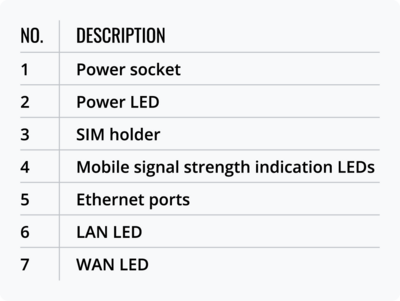 |
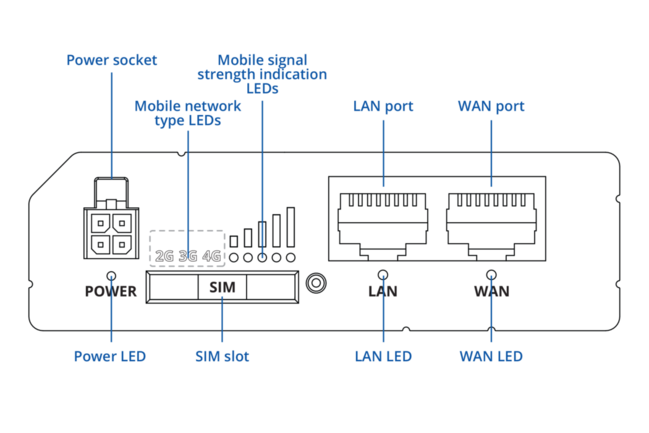 |
Back view
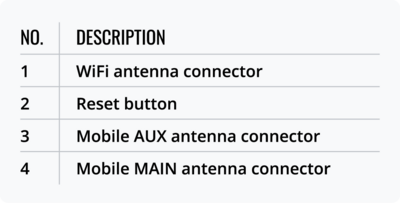 |
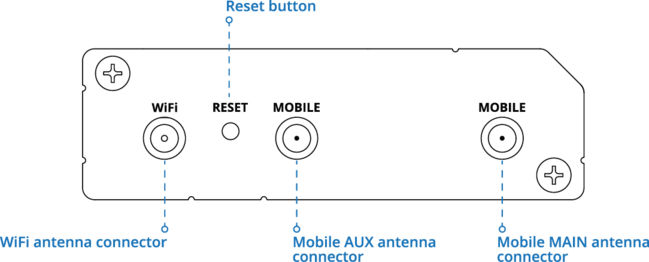 |
Connectors
POWER SOCKET PINOUT
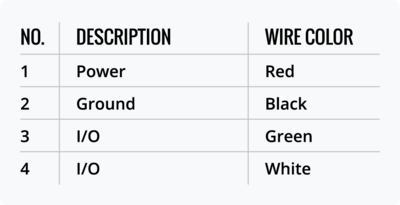 |
 |
Hardware installation
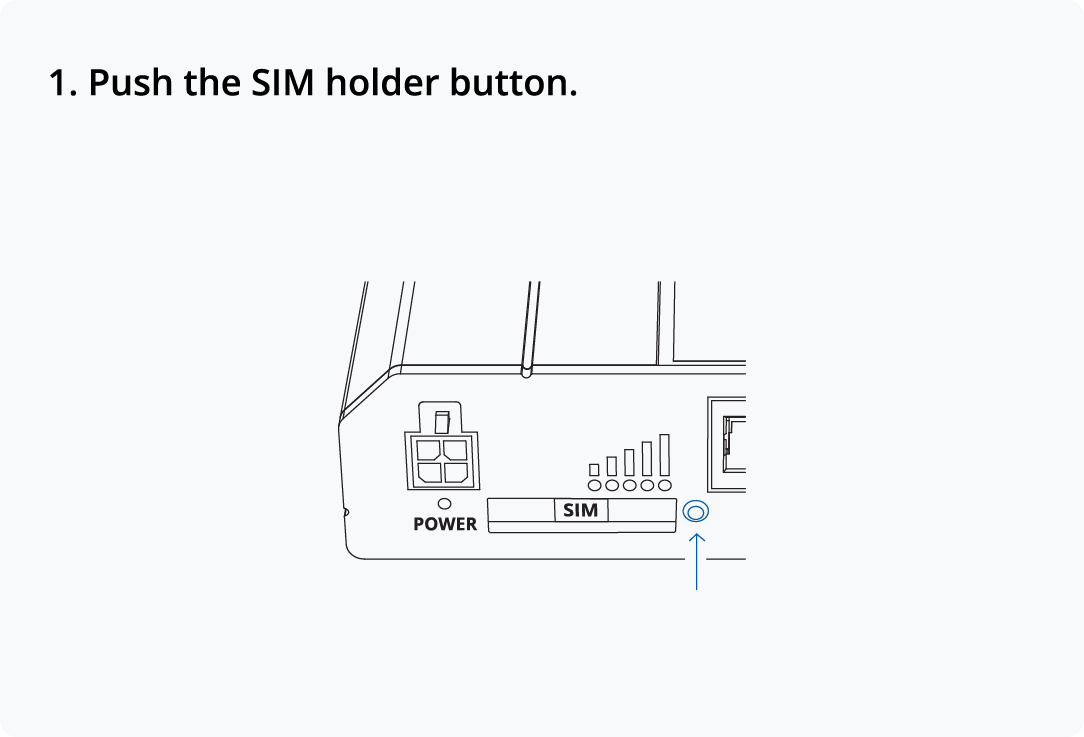 |
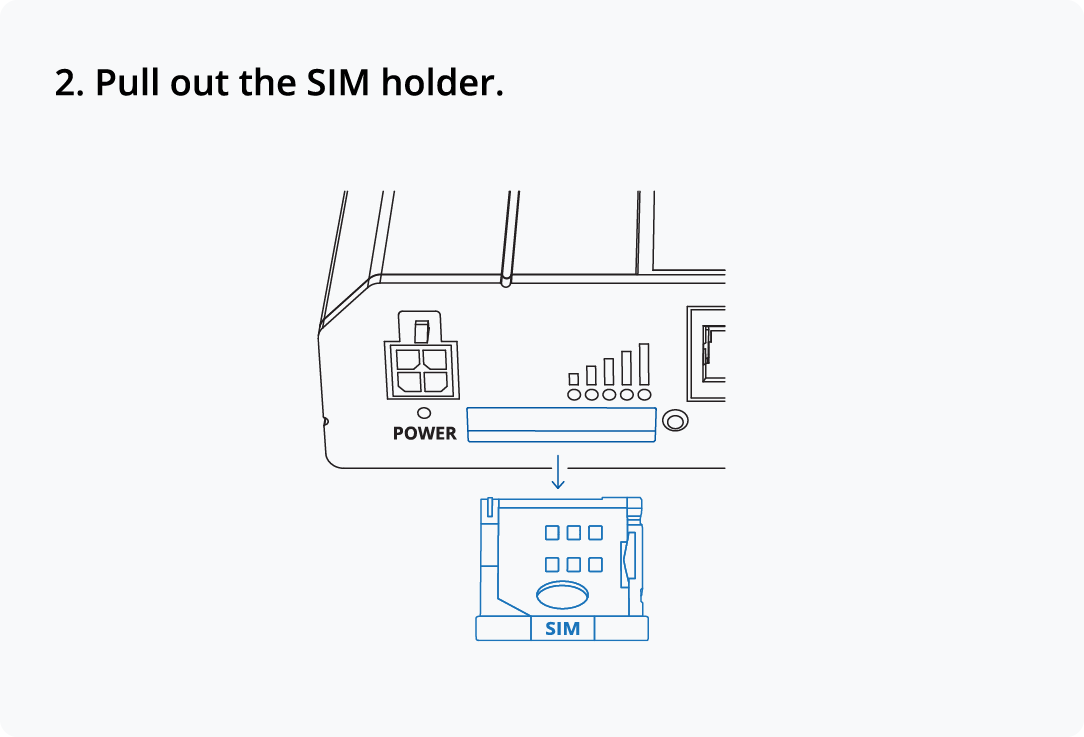 |
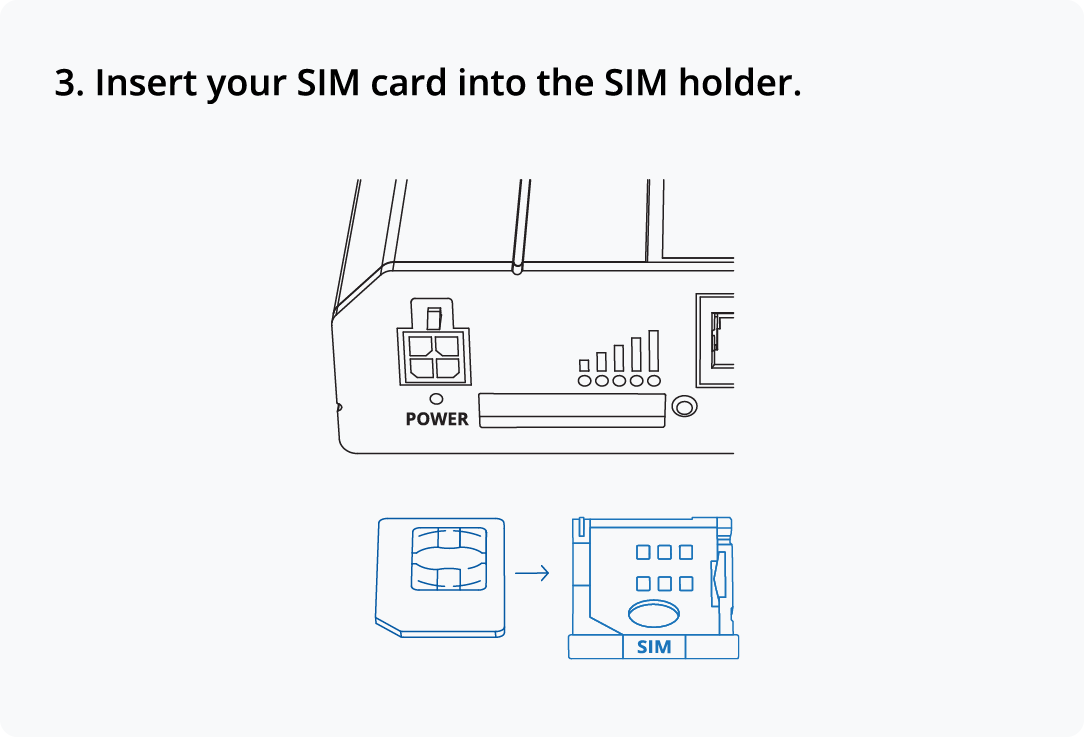 |
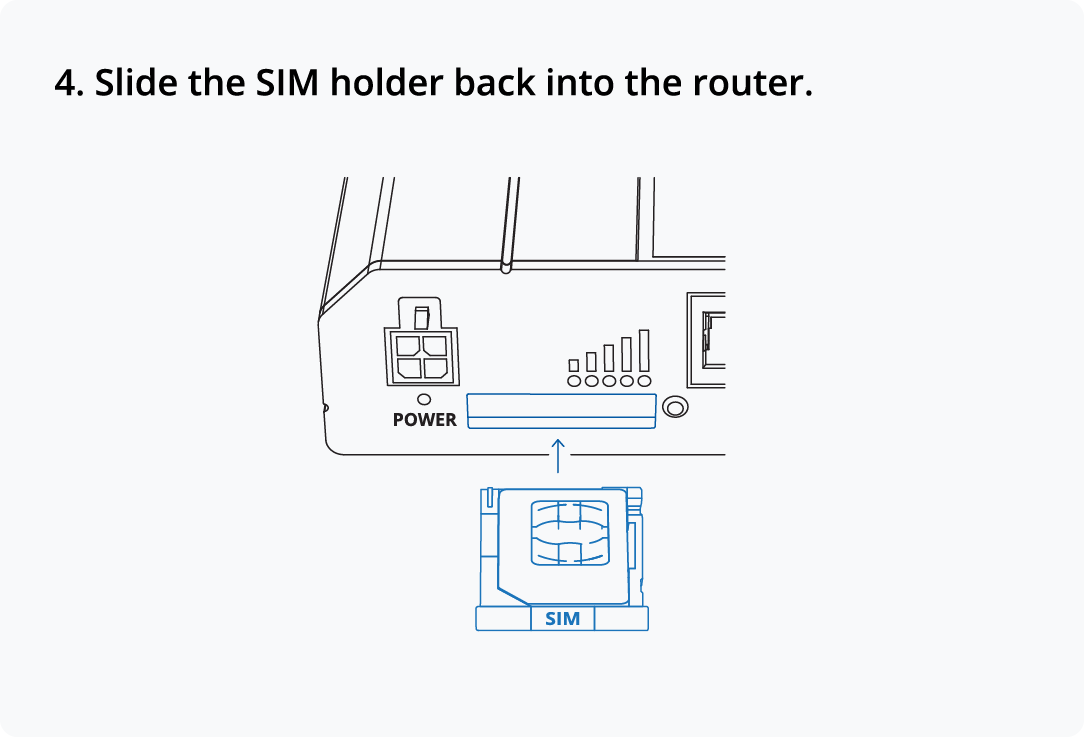 |
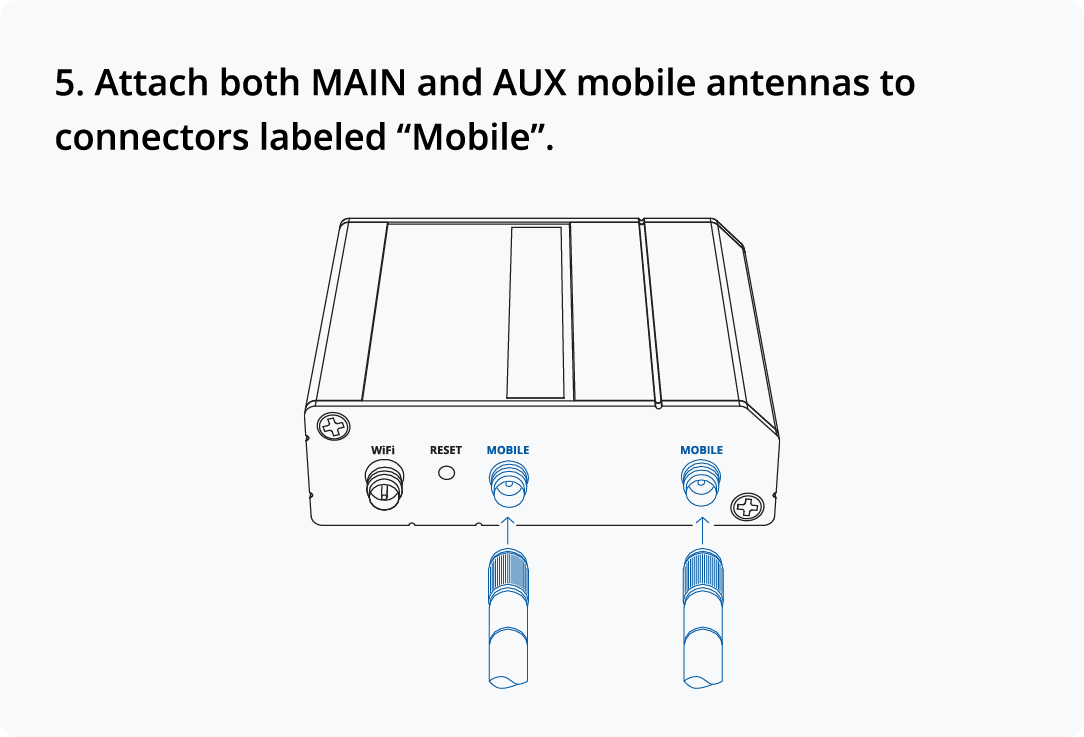 |
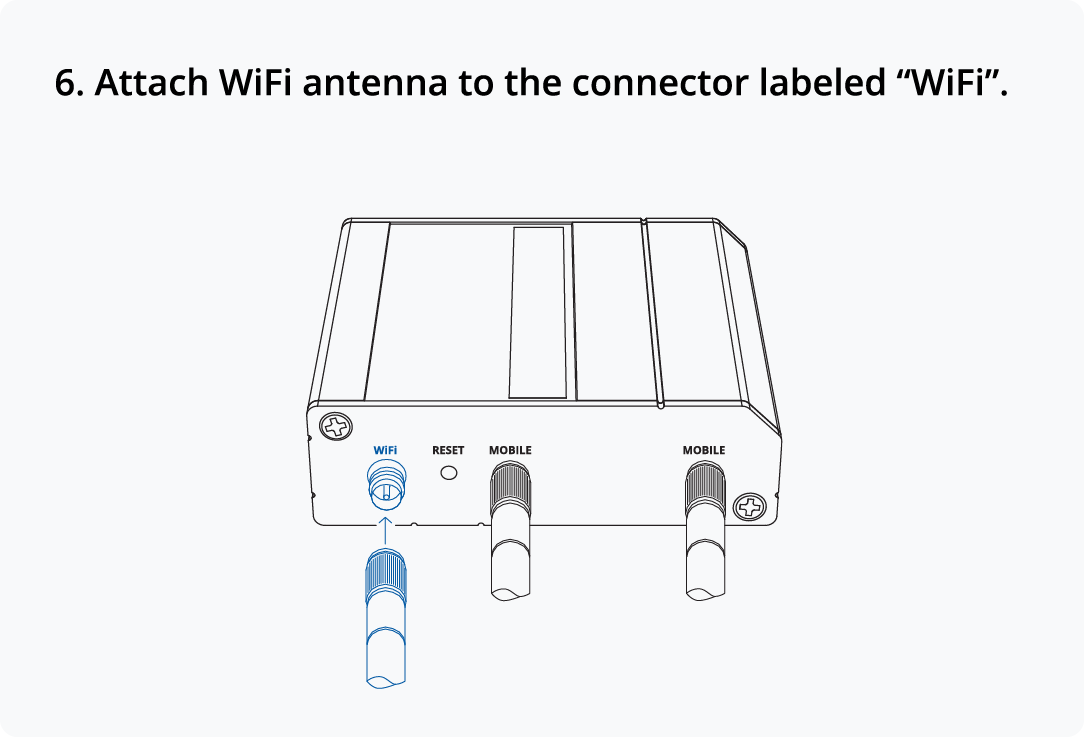 |
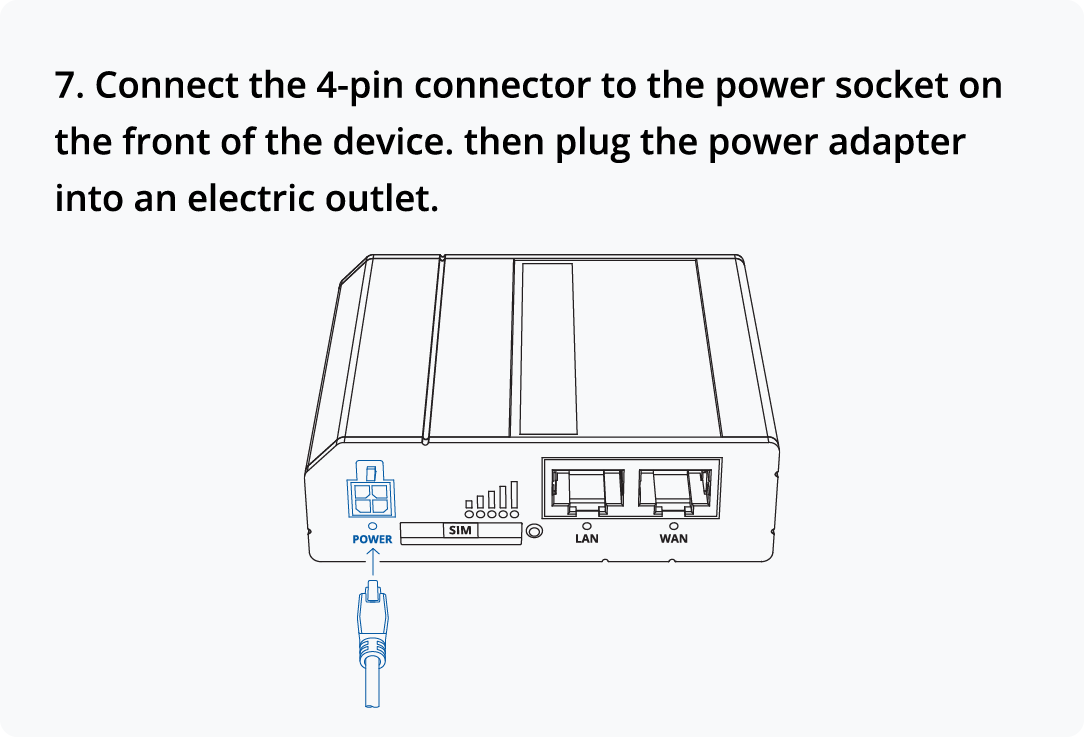 |
Configure your computer LAN (Windows)
Configure your computer Wi-Fi (Windows)
Login to device
| 1. To enter the router's Web interface (WebUI), type http://192.168.1.1 into the URL field of your Internet browser. 2. When prompted for authentication enter the username admin and enter the password located on the device information label/engraving. |
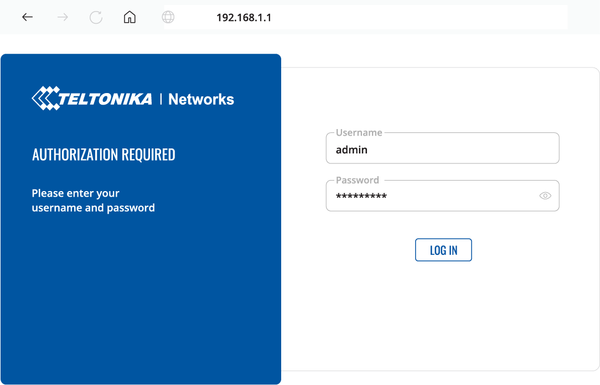 |
| 3. After logging in, you must set a new password for security reasons. You will not be able to interact with the router’s WebUI until the default password is changed. The new password must consist of a minimum of 8 characters. Requirements: one uppercase letter, one lowercase letter, and one digit. 4. Next, the Configuration Wizard will start to help you set up some of the router's main operational parameters. 5. Finally, let's verify the Mobile signal strength. Go to the Status — Network page and pay attention to the Signal Strength indication.
|
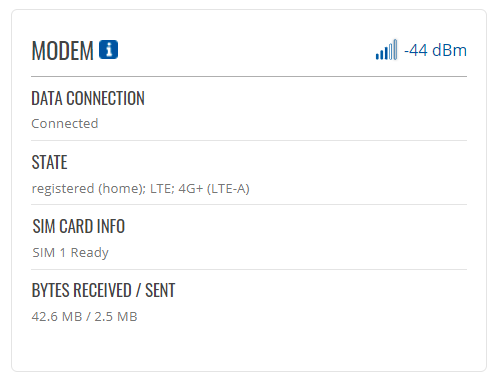 |
SIM card recommendations
- Before installing the SIM cards, please apply a thin layer of dielectric grease to the SIM card contacts for devices used in environments with high-vibration levels. This will help avoid SIM cards losing touch with the SIM slot and prevent unexpected failures.
- Industrial Grade SIM cards are recommended for devices requiring a long lifespan used in environments with extreme temperatures, corrosive or extra humid climates, or hard-to-reach locations.

